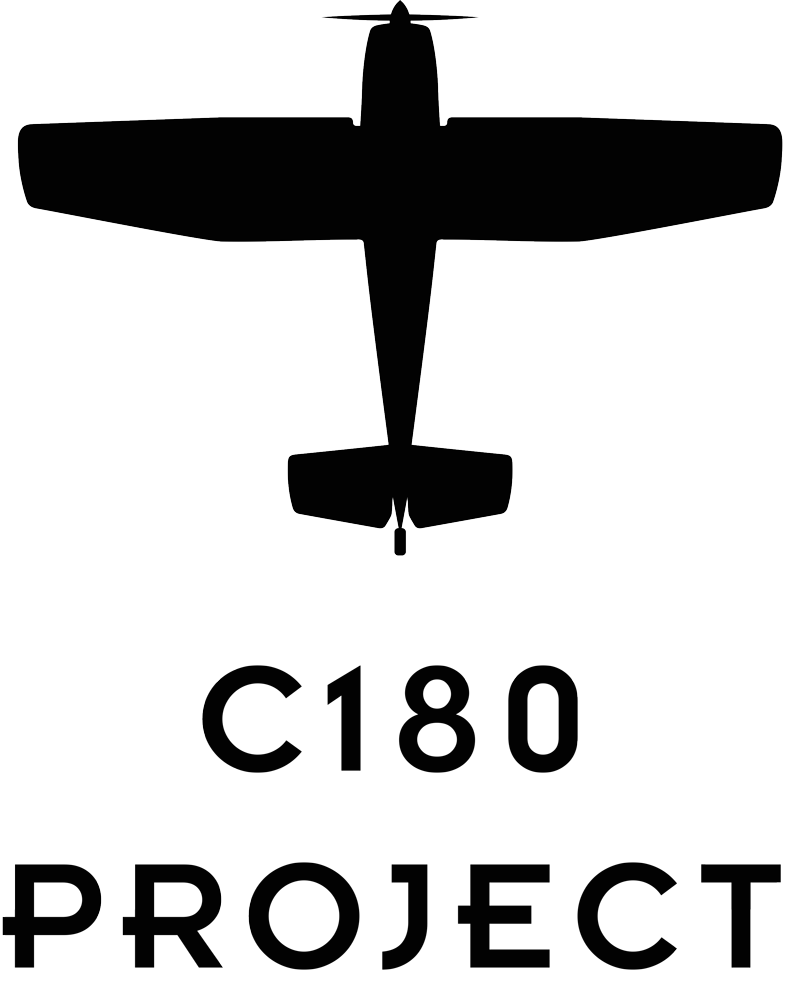Skywagon Differences
June 18, 2015Arguably the best starting page on the web for the Cessna Skywagon, most of us first stumble on Mark Pilkington’s site Skywagon.com. Although some of the info is outdated, Mark’s site still boils down the “need to know” info on the Skywagon models.
The following information is copied from the “resources” tab on Skywagons.com site. Bushwagon East is not connected with Mark or Skywagons.com in anyway, (but thanks Mark for keeping the info up.)
The following information is from the “resources” tab on Skywagons.com site. Skywagon East is not affiliated with Skywagons.com and makes no claim on the merchantability of their airplanes.
THE CESSNA 180/185 YEAR MODEL CHANGES FROM 1953 THROUGH 1985
DISCLAIMER
The technical data in this article has been carefully checked and it is HOPED that no significant errors are present. However, in no case should it be used in place of an appropriate Owner’s Manual and no responsibility or liability is assumed to any person or persons in connection with the use of the data in this booklet. Also, neither the author nor the company assumes any responsibility or liability for the contents of this article or for damages resulting from ANYTHING reported in this article. GENERAL COMMENTS The Cessna 180/185 is an all-metal high wing four-passenger plane with a fixed conventional landing gear. The wing has an NACA 2412 series airfoil section and used a single extruded aluminum front strut. A semi-monocoque fuselage is used and two yard-wide doors open on each side of the cabin.
SPECIFICATIONS TO ALL OR MOST OF THE 180/185 SERIES Length 25 ft. 6 in.
Height 7 ft. 6 in. Wing Span 36 ft. Wing Area 175 sq. ft. Landing Speed About 55 mph for all models 1953 on.
The main landing gear, which is fabricated from chrome-vanadium spring steel, is probably the most forgiving and maintenance-free in the industry. The tail wheel features a tubular steel spring with a steerable and full swiveling pneumatic tire and wheel.
Fuel Tanks
The fuel system is a simple gravity-flow type with wing mounted fuel cells. Standard gas capacity is 60 gallons total for the 1953-56 models and the standard capacity is 65 gallons for the 1957-64 models. In 1961, large optional tanks totaling 84 gallons were offered for the first time on the 185, in 1962 they became available on the 180 also. The 1953-61 models have a single outlet in each tank. Beginning with the 1962 models, two fuel pickups are used in each fuel cell, fore and aft, rather than one. Addition of this second fuel outlet in each wing cell has the effect of giving less unusable fuel in some of the adverse attitudes of flight. The fuel outlets are coupled through a four-position selector valve and both tanks can be used at once or each separately. The fourth position is off.
Due to the high angle of climb and descent possible and being of the gravity feed type, the usable fuel of these tanks has to be rated as to all attitudes of flight. This causes confusion as some models are listed as carrying up to 5 gallons of fuel in each tank as unusable. This is true only in very unusual attitudes. In level or normal flight, the 180 will use all but 1- 1 1/2 gallons of fuel from each cell. Most of this could actually be used in an emergency by flying with one wing high and then the other wing high to allow this fuel to run to the pickup area.
In 1957, the gross weight of the 180 aircraft was increased by 100 lbs. and the fuel capacity increased from the original 60 gallons (30 per wing) to 65 gallons total. Due to the new all attitude requirement, the usable fuel was rated at 55 gallons. Since unusable fuel is part of the aircraft’s empty weight, it may be noted that the empty weight appears to have increased by about 50 lbs. and the useful load gain only 50 lbs. in the 1957 model – when actually the useful load is really increased about 100 lbs. except in unusual flight attitudes.
Wing Flaps Large single-slotted Fowler type “Para-Lift” flaps are used on all models. They increase the size of the wing as well as the camber. At half-flaps, excellent lift is obtained and at full 40 degrees of flaps, a very high rate of sink is possible. An experienced pilot can easily land a fully loaded 180 on a football field. The flaps are operated by a single manual lever and maximum flap lowering speed is 100 mph on all models up to 1964. The 1964 – 1975 models allow 110 mph. Maximum flap lowering speed and the 1976 and later models allow 120 knots for flaps at 10 degrees and 90 knots or lower for 20-40 degrees flaps. Float and Skis All models of the Cessna 180 and 185, including the original 1953 model, are approved for operation on floats. In 1955 the Edo Corporation introduced an amphibious model which could be installed on any 180. The Cessna 180 was the first aircraft of a four-place type ever to be approved for use with retractable gear amphibious floats. In addition, a very wide variety of ski installations are also approved, including wheel replacement, wheel penetration and hydraulic retractable wheel skis. Miscellaneous Miscellaneous approved items for most of these aircraft include an 18 gallon Javelin baggage compartment fuel tank, camera installations, and the Alcor “Cargomore” utility door. The Whitaker model L-19 tandem gear utilizing dual wheels is approved for operation of the Cessna 180 on rough terrain. Crosswind gear and the Geiss safety gear are approved. Several autopilots including the Lear L-2, Arcon, Brittain, and Tactair were the first to be approved. CESSNA 180 The Cessna 180 received its approved type certificate (#5A6) on December 23, 1952. The first dealer deliveries were early in 1953. The first production models were certified both as land and seaplanes.
The 180 was constructed for both strength and durability. It gives excellent speed for a fixed gear aircraft and is well known for its exceptionally high performance. It has outstanding ability for getting a heavy load off the ground and to altitude in a hurry. Actually the 180 will climb from sea level to 20,000 feet in about 45 minutes. As to its durability, there has never been a single AD bulletin concerning the airframe structure of the Cessna 180 since the first production models were built in 1953.
All models of the 180 are powered by a 471 cubic inch six cylinder Continental air-cooled engine with a constant speed aluminum alloy metal propeller.
The 180 was produced from 1953 until 1981 when production was suspended due to sagging sales in the light aircraft market.
Typical Cruise Speeds
1953 – 1972 C180’s 130-135 kts.
1973 – 1976 C180’s 133 kts.
1977 – 1981 C180’s 136 – 140 kts
Airframes vary greatly. Joe has seen some models 10-12 knots faster or slower depending on the way they are rigged and configured.
Engines Rated Continuous Model Manufacturer hp At Octane Ratio ’53 180 Continental O-470-A* 225 2600 80/87 7-1 *(The old saying goes – If it’s an A, walk away. Continental will not even accept an A engine for a core). ’54 180** Continental O-470-J 225 2550 80/87 7-1 ’55 180 **(The engine was changed to O-470-J near the end of 1954 production). ’56-’57 180 Continental O-470-K 230 2600 80/87 7-1 ’58 180A ’59 180B ’60 180C Continental O-470-L 230 2600 80/87 7-1 ’61 180D ’62 180E Continental O-470-R 230 2600 80/87 7-1 ’63 180F ’64 180G ’65–‘72 180H ‘73-’74 180J ’75-’76 180J Continental O-470-S 230 2600 80/87 7-1 ’77-’81 180K Continental O-470-U 230 2400 100 LL 8.6-1 1953 Model 180 Comments – Serial numbers 30,000 through 30,639 (only 639 built) The baggage capacity is 120 lbs. and this is the same in all later models. The 1953 model did not have an outside baggage door and the only access to the baggage compartment was over the fold-down backseats. Controllable cowl flaps are standard on the model 180 and a large access door is standard on each side of the cowling. Engine exhaust is through dual mufflers – one of which is shrouded for carburetor heat and one for cabin heat. (A Stewart-Warner gasoline heater was optional through 1955). Fuel gauges are direct reading mechanical type. The engine was the O-470-A.
1954 Model 180 – Serial numbers 30,640 through 31,259 (only 619 built)
Improvements and New Features
- An outside baggage door was added, measuring approximately 15 x 22 in. This baggage door is standard also in all succeeding models.
- The engine was changed to O-470-J near the end of 1954 production.
1955 Model 180 – Serial numbers 31,260 through 32,150 (only 890 built)
Improvements and New Features
- A slower turning engine, the O-470-J, was standard, producing the same horsepower as in the previous model, but at fewer rpms.
- The main wheels were moved 3 inches further ahead for improved braking and ground handling. This was done by changing the rake (forward angle) of the spring steel gear.
- New heavier 1/4 inch thick windshield for better soundproofing and extra fiberglass soundproofing was added to the cabin and wing-butt areas.
- Fresh air inlets were moved further out on the leading edge of the wing. This placed them outside of the propeller slipstream and lowered the noise level in the cabin.
1956 Model 180 – Serial numbers 32,151 through 32,661 (only 510 built)
Improvements and New Features
- A new engine was used for the 1956 models – the O-470-K, developing 230 hp at 2600 rpm. These engines featured larger steel cast cylinder heads having thinner and more numerous fins – for cooler operation. Additional dynamic dampeners were used and these plus revised engine mounts produced a much smoother, quieter, vibration-free engine operation.
- The engine cowling was redesigned by adding a carburetor airscoop at the bottom – this gives more engine power from the ram-air effect and is said to give up to 1 1/4 inch more manifold pressure at high altitude than the previous arrangement.
- A new large stainless steel single muffler was used for the first time with separate compartments within the muffler for carburetor heat and cabin heat. This had a long single exhaust stack at the lower left side of the engine cowl.
- The tail wheel was modified to give more steering ability.
- The fuel vent to the main tanks was moved to a new position behind the left wing strut to prevent ice formation in icing conditions.
1957 Model 180 – Serial numbers 32,662 through 32,999 and 50,000 through 50,105 (only 442 built)
Improvements and New Features
- The gross weight was increased 100 lbs.
- The gear leg thickness increased from .650″ to .700″.
- A fuel strainer drain control was added to the inside for ease of draining fuel without having to reach under the cowl.
- Instrument panel rearranged and new electric fuel gauges used for the first time. Engine instruments used were smaller non-standard types.
- A heavier door seal was used. For ease of locking, a new cam type latch was used for pulling the door in tightly on the seal. A flush long lever type outside door handle was added for ease of opening the door.
- A generator-warning red light was used to replace the ammeter. This also served to warn that the master switch is on when the engine is not running.
- A vacuum selector switch was used on the panel to allow checking the vacuum of either the directional gyro or the artificial horizon.
- The fuel capacity was increased from 60 to 65 gallons total. This plus a modified, more economical carburetor, increased the range.
- Note – it appears that the empty weight increased about 50 lbs. in the 1957 models. This is not entirely true since the unusable fuel rating was upped and this fuel included in the empty weight.
1958 Model 180A – Serial numbers 50,106 through 50,355 (only 249 built)
Improvements and New Features
- The engine exhaust outlet was changed to the right side on all models to route the exhaust stain down under the fuselage – on earlier models there was some tendency for exhaust stains to accumulate on the left side of the fuselage due to slip-stream effects.
- New seal put around windows for reduction in wind noise.
- New instrument panel and new lighting console. The tachometer and m.p. gauge went back to standard size.
- A new ratchet-click mechanism added to the elevator trim wheel to prevent creeping.
- Lock with key for opening added to baggage door.
- An 18-gallon aux. baggage compartment fuel tank was a factory installed option.
1959 Model 180B – Serial numbers 50,356 through 50,661 (only 305 built)
Improvements and New Features
- New heavier door hinges.
- New instrument panel.
- New adjustable fresh air vents for the rear seat area. (optional)
- Optional pilot and co-pilot 3- position tilting seats.
1960 Model 180C – Serial numbers 50,662 through 50,911 (only 249 built)
Improvements and New Features
- Fuel cells changed to incorporate flush gas tank caps on the upper surface of the wings to replace the original counter-sunk caps.
- Seat backs made adjustable with optional headrests.
- New smaller, streamlined wing fillets (flap area).
- The airscoop was removed and the airscreen flush-mounted on the front of the cowl. The net effect of the cowling redesign was to produce slightly more airspeed, although Cessna never advertised this.
- New stabilizer-elevator down spring to improve longitudinal stability.
- Increased headroom in the third and fourth seats due to a redesigned bulkhead and skin on top of fuselage.
- First year for the O-470-L engine.
1961 Model 180D – Serial numbers 50,912 through 51,063 (only 151 built)
Improvements and New Features
- Cowling was changed to incorporate cam locks for holding it on.
- “Shower of Sparks” Bendix mags were used for easier starting. A special switch was used under the instrument panel to supply primary current to the mag coils without engaging the starter to allow hand cranking of the engine.
- A new lever-type cowl flap control with mechanical position notches.
- New generator – 50 amp, as standard equipment – all.
1962 Model 180E – Serial numbers 51,064 through 51,183 (only 119 built)
Improvements and New Features
- New fuel tank outlets added, so that each wing tank has two outlets (one forward and one aft) rather than only one per tank. This gives a less unusable fuel rating.
- New optional long-range wing tanks, increasing capacity to 84 gallons.
- New O-470-R engine.
- New wing tips and position light mounts.
1963 Model 180F – Serial numbers 51,184 through 51,312 (only 128 built)
Improvements and New Features
- New magnesium cast rudder pedals.
- Magnetos changed to the impulse coupling type replacing the “Shower of Sparks”.
- Instrument panel lighting controls in overhead panel.
- Semi-reclining front seats.
- First year for 10 degree flaps.
1964 Model 180G – Serial numbers 51,313 through 51,445 (only 132 built)
Improvements and New Features
- New instrument panel, new heavy-duty axle and new third window on side.
- Dive speeds (red line) increased to 192 mph I.A.S. on all models from the previous 184-mph red line speed. Flap lowering speeds increased to 110 mph.
- Gross weight increase of 150 lbs. with more useful load.
- Changed to 185 landing gear.
- Third window added to fuselage.
- Manual tail wheel lock.
- Cleveland dual piston brakes.
- Generator replaced by 52 amp, 14V alternator.
1965 Model 180H – Serial numbers 51,446 through 51,607 (only 161 built)
Improvements and New Features
- 182 firewall used, making 180 and 185 airframes identical.
- Redesigned instrument panel to accommodate center stack radios.
- Open view control wheels.
- Improved fuel strainer.
- Integrated engine instrument cluster.
- Redesigned doors on engine cowl.
1966 Model 180H – Serial numbers 51,608 through 51,774 (only 166 built)
Improvements and New Features
- Improved door latches.
- Front seat legroom increased.
1967 Model 180H – Serial numbers 51,775 through 51,875 (only 100 built)
Improvements and New Features
- Pointed propeller spinner increases length 3 inches.
- Extended baggage area in aft cabin.
- Aeroflash rotating beacon.
- Optional auxiliary door on left side.
- 60 amp alternator.
- Individual center passenger seats.
- Split bus electrical system.
- Cleveland brakes standard.
1968 Model 180H – Serial numbers 51,876 through 51,993 (only 117 built)
Improvements and New Features
- New baggage door.
- Fuel strainer cable relocated to oil filler door.
1969 Model 180H – Serial numbers 51,994 through 52,103 (only 109 built)
Improvements and New Features
- Skywagon name used for the first time with Model 180.
- 300/400 ARC avionics available.
- Fresh air vents restyled.
1970 Model 180H – Serial numbers 52,104 through 52,175 (only 71 built)
Improvements and New Features
- Conical camber wing tip decreases wing span 4 inches.
1971 Model 180H – Serial numbers 52,176 through 52,221 (only 45 built)
Improvements and New Features
No major changes made.
1972 Model 180H – Serial numbers 52,222 through 52,284 (only 62 built)
Improvements and New Features
No major changes made.
1973 Model 180J – Serial numbers 52,285 through 52,384 (only 99 built)
Improvements and New Features
- “Camber lift” wing with bonded leading edge.
- Revised instrument panel with rocker switches.
- Dual cowl mounted landing and taxi lights.
- Split rocker master switch.
- Padded control wheels.
1974 Model 180J – Serial numbers 52,385 through 52,500 (only 115 built)
Improvements and New Features
- Optional cabin door bubble observation windows.
- Optional skylights and lower door panels.
- Optional rudder pedal extensions.
- Vertical fin attachment redesigned.
1975 Model 180J – Serial numbers 52,501 through 52,620 (only 119 built)
Improvements and New Features
- Engine changed to O-470-S, horsepower remained 230 hp.
- Improved cabin heat valve.
- The optional float plan kit includes the C-185 vertical fin to the end of production.
1976 Model 180J – Serial numbers 52,621 through 52,770 (only 149 built)
Improvements and New Features
- Primary airspeed indication in knots.
- Flush folding 5th and 6th seats.
- Flap extension speed increased to 120 knots.
- McCauley main wheels and brakes.
- Last year for auto fuel STC.
1977 Model 180K – Serial numbers 52,771 through 52,905 (only 134 built)
Improvements and New Features
- Engine changed to high compression O-470-U. Horsepower remained 230 hp but at 200 rpm less.
- Vernier mixture control.
- Heater plenum relocated to firewall.
- Strengthened tail wheel.
- Basic flight instruments in “T” configuration. More holes and lowered control yoke 1 1/2″. Went to smaller yokes for knee clearance.
- First year for McCauley tail wheel and stronger tail wheel gear spring tube (1 1/8″).
1978 Model 180K – Serial numbers 52,906 through 53,000 (only 94 built)
Improvements and New Features
- “Skywagon II” referred options package available.
- 28-volt electrical system, avionics master switch.
- Polyurethane paint standard.
1979 Model 180K – Serial numbers 53,001 through 53,115 (only 114 built)
Improvements and New Features
- New design optional wheel and brake fairing.
- Bladder tanks were discontinued. (Wet wings). 88 gallons total, 84 gallons usable. 1979 to 1981 models.
1980 Model 180K – Serial numbers 53,116 through 53,167 (only 51 built)
Improvements and New Features
- Improved audio panel.
1981 Model 180K – Serial numbers 53,168 through 53,203 (only 35 built)
Improvements and New Features
- Improved avionics cooling system eliminates exterior ram scoop.
Last 180 completed (SN – 18053203) rolled off the production line September 10, 1981. Total production was 6,193.
AiResearch Turbocharger
An AiResearch turbocharger was developed and used by Bob Byers of Seattle, Washington for his 1954 Cessna 180. This aircraft was used for high altitude photography and flights above 34,000 ft have been made. The installation weighs about 64 lbs. and gives a true air speed of 202 mph at 20,000 ft using 60% power. This aircraft at a 2450 lb. gross weight is said to climb to 20,000 ft in only 19 minutes and sea level take-off power is available at altitudes up to 18,500 ft. See Flight Magazine, October 1962, page 29. (No attempt was made to validate the preceding article.)
New York to Paris
On January 29, 1956 Capt. Bill Judd, veteran TWA airline pilot, took off from Westchester County Airport in his 1956 Cessna 180 “Star of the Red Sea” and flew non-stop to Paris – a distance of more than 3600 miles. In spite of icing conditions and IFR weather encountered over the North Atlantic, the flight averaged 156 mph.
Gross weight at take-off was 4150 lbs and 323 gals. of fuel was carried. The take-off run required only about 1100 ft. in spite of the very high gross weight.
Total fuel consumed during the flight was 226 gals. and the flight time from New York to Paris was 24 hours. Fuel consumption was less than 10 gals. per hour, which is excellent considering the ground speed made and the fact that the plane was 1600 lbs overloaded at take-off. Capt. Judd had originally planned his flight to be a non-stop from New York to Cairo, Egypt but because of icing conditions discontinued the flight at Paris. The plane had 97 gals. of fuel remaining when landed at the Toussus-le-Noble Airport. The next day Capt. Judd took off and flew non-stop from Paris to Cairo in 15 hours.
This flight in the “Star of the Red Sea” demonstrates the remarkable performance that can be obtained from an outstanding plane when flown by an equally outstanding, capable pilot.*
*(No attempt was made to validate the authenticity of this article. We also do not suggest that anything like this be attempted by anyone).
CESSNA 185 The 185 was introduced in 1961 as a heavy duty version of the 180 sporting more power and greater useful load and was produced until 1985.
All versions of the 185 were factory equipped with either a Continental IO-470-F engine or a Continental IO-520-D. A three bladed propeller was offered on 1978-1979 Cessna 185s as an option and standard on 1980-1985 Cessna 185s, all of which are powered by IO-520-D engines.
Typical Cruise Speeds
1961 – 1965 C185’s 140 kts.
1966 – 1972 C185’s 145 – 148 kts.
1973 – 1985 C185’s 145 – 150 kts.
Airframes vary greatly. Joe has seen some models 10-12 knots faster or slower depending on the way they are rigged and configured.
Engines Rated Continuous Model Manufacturer hp At Octane Ratio ’62 185A Continental IO-470-F 260 2625 100/130 8.6-1 ’63 185B ’64 185C ’65 185D ’66-’72 185E Continental IO-520-D 300 2850 100/130 8.5-1 ’73-’85 A185F for takeoff (5 min) and continuous 285 at 2700 1961 Model 185 Comments – Serial numbers 0001 through 0237 (only 237 built) Model 185 was introduced. It is similar to the 180, with a more powerful engine and structural beef-up. The engine was a Continental fuel injected IO-470-F, 260 hp. Compared to the 1961 model 180, the 185 had stronger firewall, landing gear and axles. The fuselage interior was extended and a third side window was added. Seating capacity was for six. A long dorsal fin from the vertical stabilizer was the main visible distinction from the model 180. Fuel capacity was 65 gallons with 84 gallons optional. A 300 lb. cargo pod was also optional. Gross weight was 3200 lbs. First to be called Skywagon. 1962 Model 185A – Serial numbers 0238 through 0512 (only 274 built) Improvements and New Features
- New wing tips with integral position lights increase span two inches.
- Vernier mixture and throttle controls.
- Two electric auxiliary fuel pumps.
1963 Model 185B – Serial numbers 0513 through 0653 (only 140 built) Improvements and New Features
- Overhead light console.
- Die cast magnesium rudder pedals.
- One electric auxiliary pump.
- Semi-reclining front seats.
1964 Model 185C – Serial numbers 0654 through 0776 (only 122 built) Improvements and New Features
- 52 amp, 14V alternator replaces generator.
- Manual tail wheel lock.
- Dual piston brakes
1965 Model 185D – Serial numbers 0777 through 0967 (only 190 built) Improvements and New Features
- Center mounted avionics.
- Open view control wheels.
- Integrated engine instrument cluster.
- Improved fuel strainer.
1966 Model 185E – Serial numbers 0968 through 1149 (only 181 built) Improvements and New Features
- Continental IO-520-D hp engine, 300 hp for takeoff optional. Aircraft with this engine are designated A185E and have 150 lb. gross weight increase. Standard aircraft with IO-520-D engine has 100-lb. gross weight increase.
- Improved door latches.
- Front seat legroom increased.
1967 Model A185E – Serial numbers 1150 through 1300 (only 150 built) Improvements and New Features
- IO-520-D engine standard.
- Pointed spinner increases length 3 inches.
- Extended rear cabin compartment.
- Split bus electrical system.
- Individual center passenger seats.
- 60 amp alternator.
- Aeroflash rotating beacon.
- Optional crosswind gear.
- Cleveland brakes standard.
- Optional stretcher door on left side.
1968 Model A185E – Serial numbers 1301 through 1447 (only 146 built) Improvements and New Features
- Redesigned induction system.
- New baggage door.
1969 Model A185E – Serial numbers 1448 through 1599 (only 151 built) Improvements and New Features
- 300/400 Series ARC avionics available.
1970 Model A185E – Serial numbers 1600 through 1832 (only 232 built) Improvements and New Features
- Optional left side-loading door.
- Conical camber wing tips decrease wing span 4 inches.
1971 Model A185E – Serial numbers 1833 through 1934 (only 101 built) Improvements and New Features No major changes made. 1972 Model A185E – Serial numbers 1935 through 2090 (only 155 built) Improvements and New Features
- “Ag carryall” option introduced with external 151 gallon chemical tank, removable spray booms with 30 nozzles, wind driven spray system, windshield wire cutters, and vertical stabilizer cable deflector. If used as a sprayer, the engine TBO was 1200 hours.
1973 Model A185F – Serial numbers 2091 through 2310 (only 219 built) Improvements and New Features
- “Camber light” wing with bonded leading edge.
- Dual cowl mounted landing/taxi lights.
- Split rocker master switch.
- Redesigned instrument panel.
- Padded control wheels, large.
1974 Model A185F – Serial numbers 2311 through 2565 (only 254 built) Improvements and New Features
- Optional bubble door windows and lower door panel windows.
- Optional skylights.
- Optional rudder pedal extensions.
- Vertical fin attachment redesigned.
1975 Model A185F – Serial numbers 2566 through 2838 (only 272 built) Improvements and New Features
- First year for phase I heavy case.
1976 Model A185F – Serial numbers 2839 through 3153 (only 314 built) Improvements and New Features
- Primary airspeed indicator in knots.
- Fifth and sixth seat fold flush.
- Flap extension speed increased to 120 knots.
- Optional tail cone lift handles.
- Fuel selector changed to “left/both/right”.
- McCauley wheels and brakes standard.
1977 Model A185F – Serial numbers 3154 through 3458 (only 304 built) Improvements and New Features
- McCauley tail wheel and stronger tail wheel gear/spring tube (1 1/8″)
- Redesigned control wheels, small.
- New basic flight instruments in “T” configuration.
- Engine – phase II, heavy case.
1978 Model A185F – Serial numbers 3459 through 3683 (only 224 built) Improvements and New Features
- 28V electrical system, avionics master switch.
- Skywagon II preferred options package available.
- Optional three bladed prop with corresponding heavier engine mount. (C403 McCauley)
- Polyurethane paint is standard.
1979 Model A185F – Serial numbers 3684 through 3938 (only 254 built) Improvements and New Features
- New design optional wheel and brake fairing.
- New “wet” wing holding 88 gallons, 84 gallons usable.
- Most late 1979 have phase III humpback case.
1980 Model A185F – Serial numbers 3939 through 4138 (only 199 built) Improvements and New Features
- Three bladed prop standard.
- Ag carryall option dropped.
- Strengthened engine mount.
- Improved audio panel.
- Push button baggage door latch.
1981 Model A185F – Serial numbers 4139 through 4328 (only 189 built) Improvements and New Features
- Improved avionics cooling system eliminates exterior ram scoop.
- Bladder fuel tanks optional.
1982 Model A185F – Serial numbers 4329 through 4394 (only 65 built) Improvements and New Features
- Single piece fuel selector shaft.
- Plastic rudder pedals.
1983 Model A185F – Serial numbers 4395 through 4415 (only 20 built) Improvements and New Features
- Low vacuum warning light.
- Direct mounting engine oil filter, eliminated adapter.
1984 Model A185F – Serial numbers 4416 through 4424 (only 8 built) Improvements and New Features No major changes made. 1985 Model A185F – Serial numbers 4425 through 4448 (only 23 built) Improvements and New Features No major changes made. Total production for Cessna 185s was 4448.










